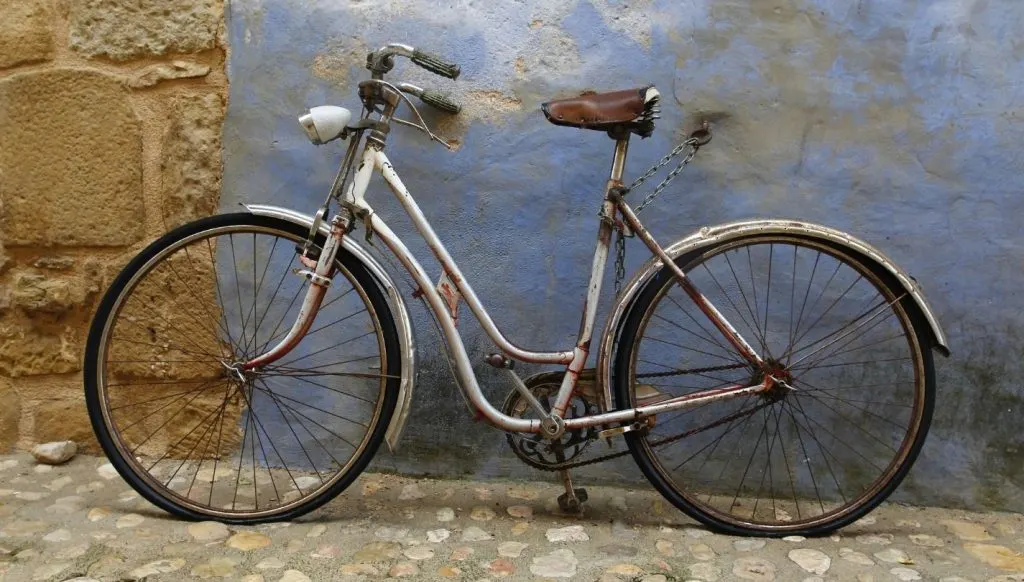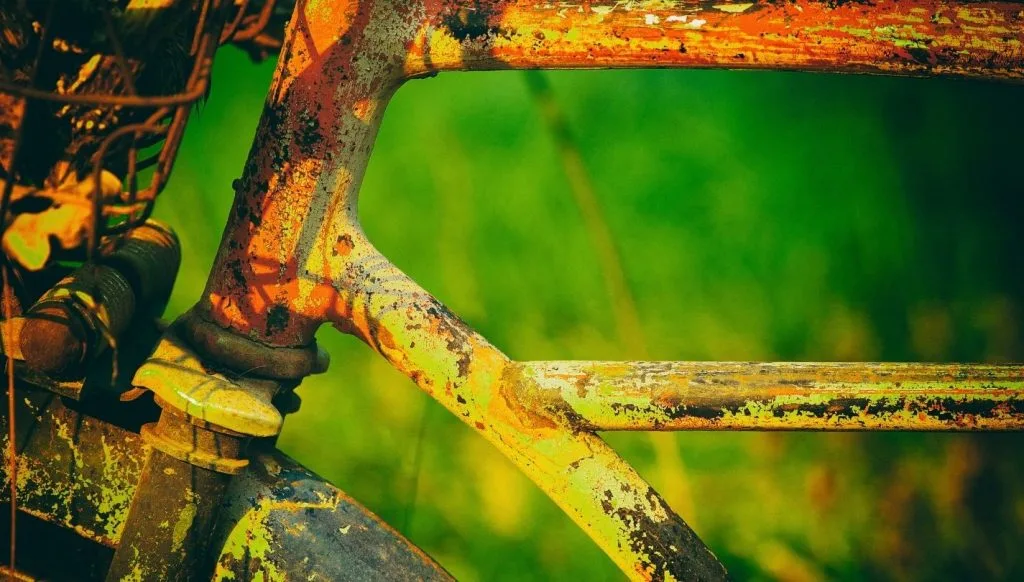
Bike frames are not cheap. In fact, they are usually the most expensive part of your bike. While a DuraAce drivetrain or an XTR braking system can set you back a few thousand dollars, a bicycle frame can cost ten times that amount.
Both aluminum and carbon bike frames will eventually wear out as a result of the accumulated material fatigue and stresses of riding them over the years. A carbon frame, if well maintained should last up to 30 or 40 years. An aluminum frame, with proper care, from 7 to around 10 years.
Whether your bike frame is made from good old traditional steel, aluminum, carbon fiber, or even titanium, you will not want to shell out for a new one any time soon. This article will take you through how to care for your bike frame to ensure it lasts as long as possible and maintains excellent working condition throughout its life…
Various Bike Frame Materials
Different bike frame materials have different qualities, and will require different maintenance styles and methods. Here’s a breakdown of the different materials bike frames are made of (and then we’ll get into how to care of each one)…
- Steel bike frames – Bicycle frames have been made from steel for centuries. It is immensely strong. In fact, steel is arguably the strongest material you can use to make a frame. The drawback to making a steel frame this strong is that it will then be rather heavy. Steel is also extremely susceptible to rust. Something which the other bike frame materials are not subject to.
- Aluminum bike frames – Aluminum is a popular material to make a frame out of. It is definitely the cheapest method and it is also lightweight. Unfortunately, it is also the least durable material because it is so brittle. Aluminum, unlike steel, will not bend or flex too much before breaking and will need to be replaced if a crack is detected anywhere on the frame.
- Carbon fiber bike frames – Carbon fiber is rapidly becoming the most popular material with which to craft a bicycle frame. Unlike steel, carbon fiber does not corrode and a bike frame made from carbon has a very high strength to weight ratio. While they are super long-lasting, they will eventually fail where the resin used to bond the carbon fiber sheets together gets old and oxidizes.
- Titanium bike frames – You will find titanium frames on many of the bikes built by custom bike building companies. Titanium is stronger than steel, does not rust, and has a high strength to weight ratio ensuring a strong frame with fewer materials. It is also quite expensive, difficult to source, and, due to its high strength, difficult to shape.
Now, how do you take care of your bike frame to make sure it stays on good working order? Let’s find out…
How to Maintain & Care for your Bicycle Frame
Steel Bike Frame Maintenance
Rust is the enemy of a steel frame. While the exterior of the frame tubing is usually protected by a few thick layers of paint and a lacquer finish, the inside of the steel tubing is normally bare steel and will, over the years, develop an enthusiastic rust colony that will eat away at the bare metal.
Depending on where you ride, humidity, road salt, water, or saltwater air will, no matter what you do to prevent it, get into your frame and provide a secure breeding ground for rust.

It is always a great idea then, to coat the inside of your steel frame with some sort of rust inhibitor. It is obviously a lot easier to do this before the frame is fully assembled with all of its components but if your bike is complete, it is worthwhile taking the headset and the seat post off and pouring in a solution of linseed oil or spraying something like WD-40 into the tubes.
Pick up your frame and roll it around so that all the inner tubes will be coated. Let it air out for a day or so and you are set.
After a wet ride, it is always a good idea to remove the seat post and store the bike upside down in a dry room.
It is also advisable to inspect your frame regularly for chips in the paint. If you find any damage, the easiest way to repair it is to coat the chip with nail polish (find the right colored polish at your local drugstore).
Aluminum Bike Frame Maintenance
Contrary to popular belief, while aluminum bikes do not rust in the same way that steel-framed bikes do, aluminum does corrode to the point where it becomes dangerous to ride.
Aluminum does not “rust” as a result of exposure to moisture alone. More often, it is road salt, the sweat from your body, or, if you live in a coastal area, airborne sea salt that starts the progression. Water is merely a catalyst to the process.
Unfortunately, due to the manner that aluminum corrodes, and, unlike a steel frame, there is not much you can do to prevent the inside of your frame from corroding.
Maintenance is the only protection. Keep the areas of your frame where salt and water are likely to gain ingress to your frame clean and dry. Make sure that you touch up chips and scratches promptly using the nail polish method.
Remove your seat post, turn the bike upside down, and dry your frame thoroughly after a wet ride.
Carbon Fiber Bicycle Frame Maintenance
For their weight, carbon fiber frames are surprisingly strong. They can withstand all sorts of ill-treatment, heavy loads, big drops or falls, including the stresses placed on them by sketchy road surfaces.
They are not so great at dealing with the smaller, sometimes unnoticed things like stone chips, scratches, cable rub, and small impacts that occur while you are out riding.
The most vulnerable parts of a carbon fiber frame to these types of impacts are the chainstay, the downtube, and the frame area around the bottom bracket.
A chainstay protector is an absolute necessity to prevent the chips that will invariably occur with the inevitable chain slap.
Likewise, a stick-on frame guard will protect your downtube from the stones and road debris thrown up onto your precious frame by your front wheel.
A regular checkup of these areas is recommended. And if you find any chips or scratches, coat the damage with the nail polish method.
Titanium Bicycle Frame Maintenance
The lifespan of titanium bike frames, like their carbon counterparts, is measured in decades. With care, your titanium frame will last you up to half a century, and even then, it is the joins that will give in rather than the frame material.
As such, there is not much you need to do to a titanium frame in the way of maintenance to ensure longevity.
However, cleaning your bike is a must. Especially after a wet ride as this will reduce the longevity of your components (rather than the frame).
After cleaning your bike apply a thin coat of furniture oil and then wipe it off to get your frame shining like new. It is also advisable to remove any tiny chips or scratches by gently rubbing the area with a small strip of scotch-brite (Amazon link). Reapply the furniture oil and then wipe it off. Your frame will look as good as new.
Check out this video on how to clean your titanium frame:
Final thoughts
Bicycle frames are built to take a pounding and are built to last.
Certain frame materials – read carbon fiber and titanium – will endure these stresses and pressures better than others and will require less maintenance as a result. But they are usually more expensive to purchase.
Whatever your budget, if you take care of your frame by washing it regularly and removing the small chips and cracks that will occur, you will extend the life of your frame to its maximum.
